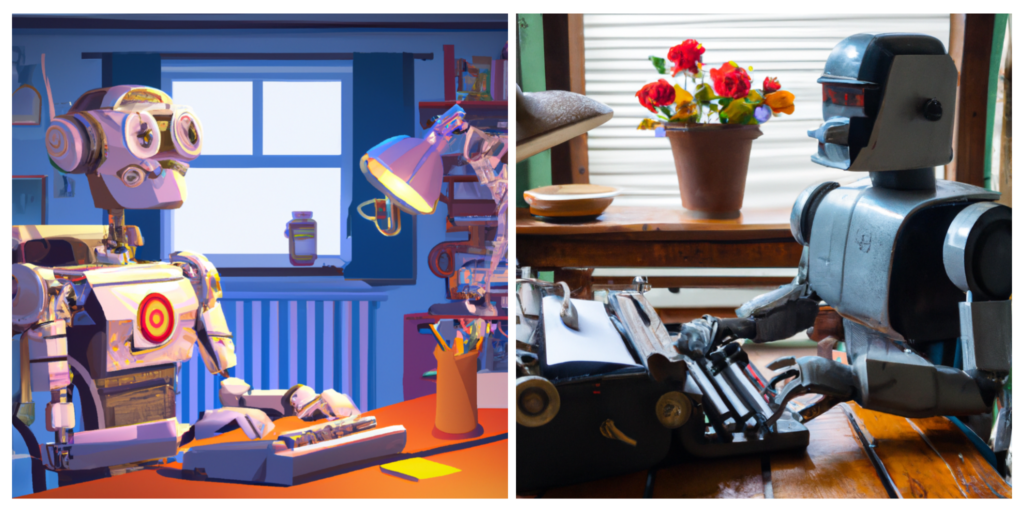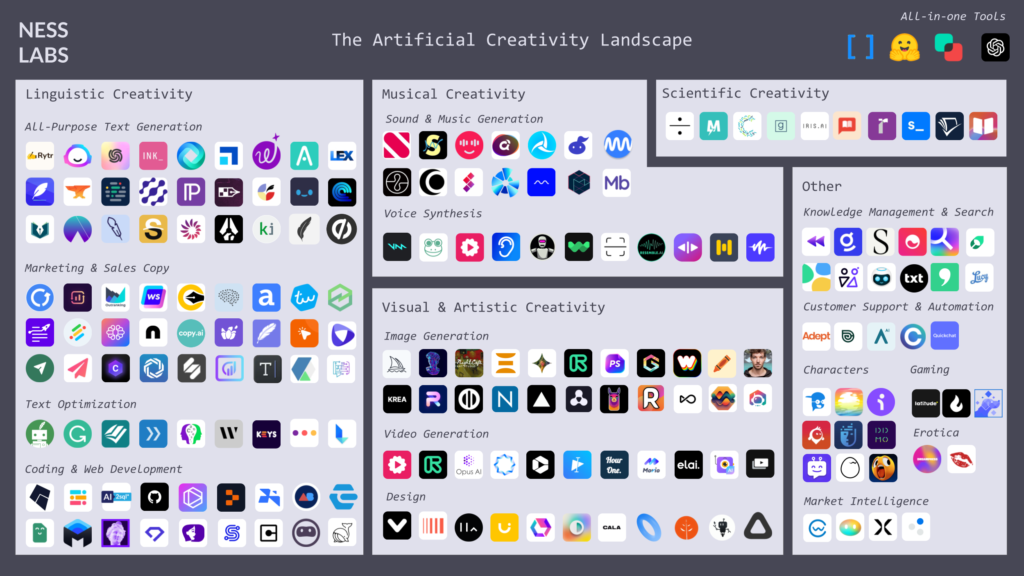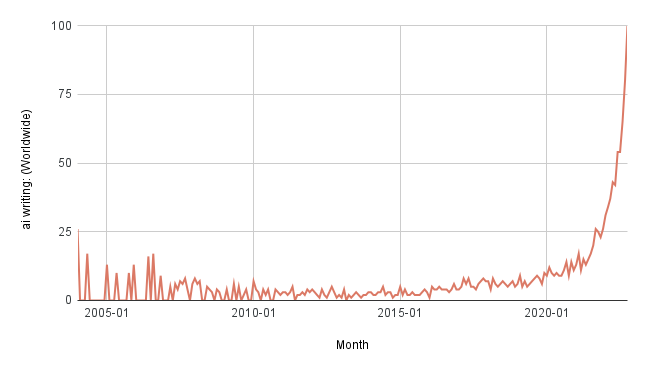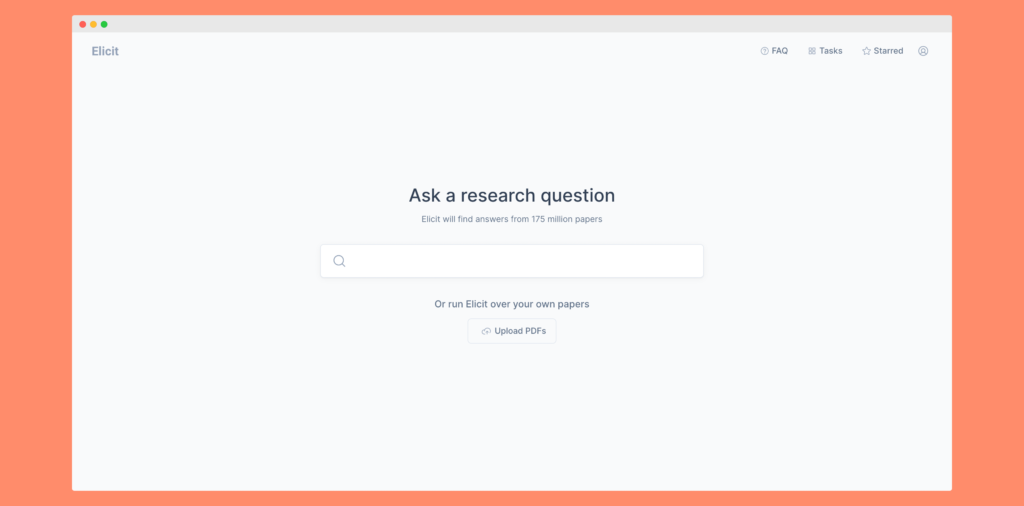A new generation of AI tools is taking the world by storm. These tools can help you write better, code faster, and generate unique imagery at scale. People are using AI tools to produce entire blog posts, create content for their company’s social media channels, and craft enticing sales emails. The advent of such powerful AI tools begs the question: what does it mean to be a creator or knowledge worker in the age of artificial creativity?
Artificial creativity is a new liminal space between machine and human, between productivity and creativity, which will affect the lives of billions of workers in the coming years. Some jobs will be replaced, others will be augmented, and many others will be reinvented in an unrecognizable way.
If your work involves creative thinking or knowledge management, read on for a primer on what’s going on with the latest generation of AI tools, and what it means to be a creator or a knowledge worker in the age of artificial creativity.
The advent of Generative AI
Artificial creativity, also known as computational creativity, is a multidisciplinary field of research that aims to design programs capable of human-level creativity. The field is not new. Already in the 19th century, scientists were debating whether artificial creativity was possible.
Ada Lovelace formulated what is probably the most famous objection to machine intelligence: if computers can only do what they are programmed to do, how can their behavior ever be called creative? In her view, independent learning is an essential feature of creativity.
But recent advances in unsupervised machine learning do bear the question of whether the creativity exhibited by some AI software is still the result of simply executing instructions from a human engineer.
It’s hard not to wonder about Ada’s thought had she seen what computers have become capable of creating. In the words of Sonya Huang, Partner at Sequoia: “As the models get bigger and bigger, they begin to deliver human-level, and then superhuman results.”
To understand what’s going on and why it matters for the very future of knowledge work and creative work, we need to understand the difference between Discriminative AI and Generative AI.
There are two main classes of statistical models used by AI. The first one, which has been used the longest and is what you’ll find in classical AI, is called “discriminative”: it discriminates between different kinds of data instances. The second class of model, much more recent, is called “generative”: it can generate new data instances.
It’s a bit easier to understand with an analogy. Let’s say you have two friends: Lee and Lexi. They’re both brilliant and they’re doing great at school, but the way they study is very different. When preparing for an exam, Lee learns everything about the topic and researches every single detail. It takes a lot of time, but once he knows it, he never forgets it. On the other hand, Lexi creates a mind map of the topic, trying to understand the connections between ideas in that problem space. It’s less systematic, but a lot more flexible.
In this story, Lee uses a discriminative approach whereas Lexi uses a generative approach. Both approaches work very well, and it’s hard to tell the difference from the outside, especially when the goal is to perform well on a specific exam. But, as you can imagine, Lexi is likely to do much better with her generative approach in situations where coming up with novel ideas is required.
That’s why discriminative models are often used in supervised machine learning (which is great for analytical tasks like image recognition), while generative models are preferred in unsupervised machine learning (which is better for creative tasks like image generation).
For many years, Generative AI was constrained by a number of factors. Those models were difficult and expensive to run, requiring elaborate workload orchestration to manage compute resources and avoid bottlenecks, and only organizations with deep pockets could afford the exorbitant cost of using cloud computing.
But things are changing fast. New techniques, more data, cheaper computing power—we’ve come to a point where any developer can now build an AI application from their living room. For an affordable cost, these applications can solve problems, come up with new ideas, and transform the way we work.
The growing landscape of AI applications
The artificial creativity space is moving so quickly, it would be impossible to map the entire landscape without missing any of the new applications that are launched every day. However, this map with more than 180 AI tools gives you an idea of the thriving ecosystem as of 2022:
This map was initially created using the three classical categories of artificial creativity: linguistic, visual, and musical creativity.
However, the range of creative tasks AI applications can perform has widely expanded in recent years, so the map also includes an additional category (scientific creativity) and a catchall category for all the weird and original ways generative models are used to augment human creativity.
1. Linguistic creativity.
Have you ever found yourself staring at a blank page, unsure where to start? AI applications may mean the end of writer’s block as we know it. And there is a huge market for those AI writing tools, as evidenced by the exponential search volumes in recent years:
Some tools like Jasper, Lex, and Rytr position themselves as general-purpose writing assistants. You just need to feed them a prompt or a paragraph, and they can complete those initial thoughts with original content.
This is one of the most promising categories of AI tools: Jasper, which was founded in 2021, recently announced a record $125 million fundraising round at a $1.5 billion valuation.
Others are specialized, addressing specific pain points. Lavender will write your sales emails, Surfer will generate SEO-optimized blog posts, Copy.ai will produce high-conversion marketing copy for your website, Nyle will create product descriptions as scale.
Code is another area of linguistic creativity where AI can change the way we work. Replit’s Ghostwriter promises to become your “partner in code”, using AI to help you write better code, faster. It generates boilerplate functions and files, provides suggestions, and refactors code—all thanks to AI.
GitHub has a similar solution called Copilot, which they’ve dubbed “your AI pair programmer”. Other tools allow you to use AI to code websites in a couple of clicks.
These writing and coding tools are evolving extremely fast. Soon, typing everything manually will feel outdated and inefficient.
2. Visual and artistic creativity
Long gone are the days where AI was mostly used for image recognition. AI-generated art is everywhere.
Tools like Midjourney, Deep Dream Generator, and Stability AI allow anyone to type a few words and to get back an image. Not sure what to type? Websites like Lexica offer massive libraries of pre-tested prompts you just have to copy and paste.
Many services such as Astria, Avatar AI, and AI Profile Picture allow you to train a model on photos of yourself, so you can create a series of AI-generated avatars to use on social media. You can ask Tattoos AI to design a unique tattoo for you, or Interior AI to create interior design mockups based on photos you upload.
The output of AI-powered visual creativity tools doesn’t have to be static. Video generation has also come a long way. Recently, Sundar Pichai, the CEO of Google, shared a long, coherent, high-resolution video that was created by AI just from text prompts.
Opus lets you turn text into movies. Tavus allows you to record one video, and to generate thousands, automatically changing some words. You could record one video sales pitch, and change the name of the person it’s addressed to in one click. And Colossyan provides you with AI actors ready to deliver the lines you provide.
3. Audio and musical creativity
Will we ever need to reach out to potential guests to invite them on our podcast? Maybe not. Podcast.ai is a podcast that is entirely generated by AI. Listeners are invited to suggest topics or even guests and hosts for future episodes.
Powerful text-to-speech applications have also hit the market. Using advanced machine translation and generative AI, Dubverse automates dubbing so you can quickly produce multilingual videos.
You can generate entire songs with AI apps like Soundful or Boomy. Melobytes allows you to transform your audio files so you can become a rapper.
Innovative apps like Endel (whose founder we have interviewed here) use AI to create personalized soundscapes to help their users focus, relax, and even sleep. The possibilities are endless.
4. Scientific creativity
Scientific research requires rigor and creativity to solve complex problems and invent innovative solutions. In that realm too, AI is coming to the rescue.
Elicit uses language models like GPT-3 to automate parts of researchers’ workflows, allowing researchers to ask a research question and to get answers from 175 million papers.
Genei automatically summarizes background reading and produces reports. In biochemistry, Cradle uses AI to predict a protein’s 3D structure and generate new sequences, saving days of work for scientists who use it.
Wizdom continuously monitors billions of data points about the global research ecosystem to automatically provide actionable insights to their users.
By unlocking data and making it accessible and digestible, all these AI applications are making research faster and cheaper to conduct.
5. Other applications
AI tools are being used in many other areas to augment human creativity. Knowledge management is a big opportunity for AI tools, which allow users to quickly get answers and generate insights from their data.
Rewind has the ambition of becoming the search engine for your life, helping you find anything you’ve seen, said, or heard. Mem uses AI to magically self-organize all your notes. Glean connects the dots across all the applications used by an organization to generate insights.
Other applications include personal assistants, smart automations, characters you can talk with, and even full-blown games designed by AI. As you’ll see on the map above, there are even AI tools to generate erotica!
The Artificial Creativity Matrix
There are two schools of thought regarding artificial creativity. The first one envisions AI as a way to enhance human creativity—a creative companion of sorts, here to spark inspiration, suggest ideas, and overcome creative blocks. But others dream of an AI able to emulate human creativity—an independent creative thinker that can fully formulate and produce novel creative work on its own.
Creativity itself is often described as either exploratory or transformational. Exploratory creativity is the process of searching a creative space governed by certain rules. Transformational creativity is the process of transforming the rules and thus creating a new creative space.
AI applications can be broadly classified according to their vision (enhance or emulate human creativity) and their aim (exploratory or transformational creativity). Using these two axes, you can create a simple matrix of AI applications:
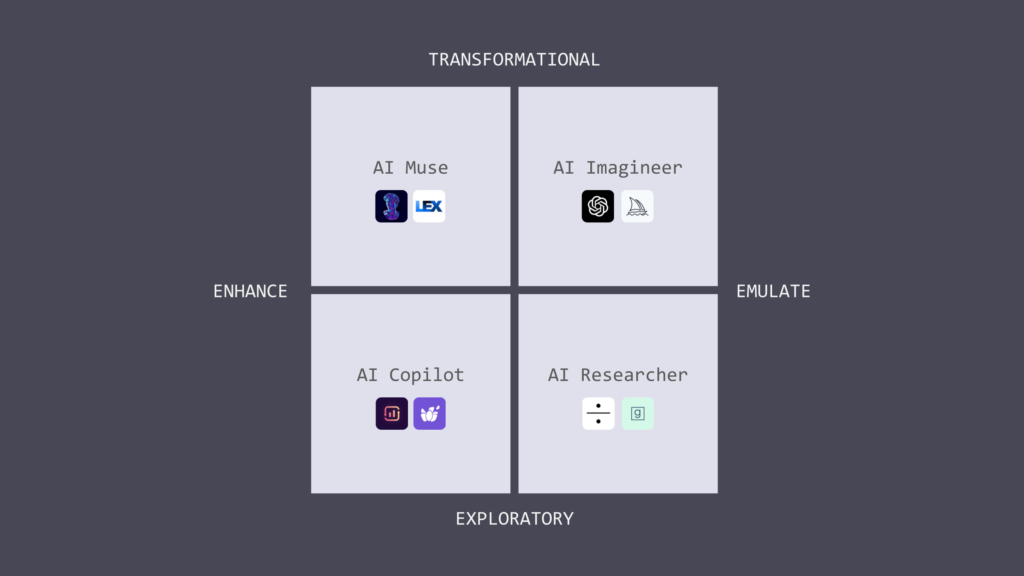
Whether they’re exploratory or transformational, whether they enhance or emulate human creativity, AI tools are here to say.
From content writing to gaming, music to marketing, coding and video production, there isn’t a category that won’t get transfigured by the advent of Generative AI. What does this paradigm shift mean for creators and knowledge workers?
Being human in the age of artificial creativity
AI tools are improving fast. In the near future, a lot of the work we consider today as intrinsically manual will feel cumbersome. The same way we look back at the tedious processes our predecessors had to endure, future creators and knowledge workers will ask themselves: “Did they really use to do that manually?”
Embracing artificial creativity can help you code faster, craft more convincing copy, write effective emails and create videos at scale. In many ways, artificial creativity is a vector for augmented cognition; another step towards unlocking our potential by freeing us from the burden of low-level tasks.
In fact, most people don’t have a problem with the idea of AI as a copilot—when striving for efficiency, there’s nothing unsettling about adding another tool to your toolbox. And many companies position their AI tools as such: a companion, a facilitator, a friendly assistant.
It’s true that, at this stage, AI tools cannot create out of nowhere. They need prompts to direct their creative output. You have to tell the AI tool to complete a paragraph you’ve started, generate an image or a video from text you’ve written, or come up with ideas based on a general topic you’ve provided.
This is all good, but where do we draw the line between creative augmentation—enhancing the way we write, inserting boilerplate code—and creative production? If AI is a co-author, at what point does it become the main author? Will we ever read novels that are entirely written by AI?
Let’s consider the impact of AI on the publishing industry, for instance. It’s easy to imagine how, in a few years, many books will be written by AI. Whether we want it or not, these books will probably be excellent, for the models will have been trained on the crème de la crème of literature.
Thinking about the future of books, we can tell ourselves there’s at least one space that’s safe and reserved to human creativity: AI won’t be able to share its own actual life stories.
An AI writer will be able to piece together enough accounts of human experiences to tell a convincing story, but there’s something powerful and intrinsically human in knowing that the author lived the pain and the joy they describe—in vicariously experiencing what they felt.
But if we look at the speed at which AI characters are developing what could only be described as a personality, it is entirely possible that human readers who have developed a connection—real or perceived, it doesn’t matter—with these AI characters will deeply care about the pains and the joys described by those artificial creators.
As a child, I was genuinely concerned about the well-being of my Tamagotchi, and I can imagine how many people will develop such a connection with AI characters who share their own “life” stories.
In short, there’s nowhere to escape. Yes, it’s unlikely AI will completely take over the book industry. We will still read human-written stories the same way we still buy handmade goods because we value what is rare.
But authors will need to get used to the idea of sharing the shelves and the bestseller lists with their artificial colleagues.
What is true of books applies to every single industry that involves creative thinking and knowledge management. In the not-so-distant future, entire professions will be replaced by AI, and humans will need to reinvent what it means to perform creative and knowledge work.
Being able to use these AI tools will be a required skill. Teams will have AI colleagues not only performing tactical tasks, but also contributing to strategic decisions.
Many ethical questions remain to be solved: what of authorship, intellectual property, and legal responsibility for work co-produced with an AI tool? Should the use of AI tools be disclosed when publishing creative and knowledge work?
Organizations around the world are grappling with these questions (this is a good list). As an individual, you too can contribute to the conversation by writing about these topics, and shape the future of artificial creativity. You could even enlist the help of an AI copilot. Please tag us at @ness_labs on Twitter if you have any thoughts to share.
P.S. If you enjoy thinking about the future of creativity, productivity, and knowledge work, make sure to join our learning community where we host virtual meetups around these topics.

